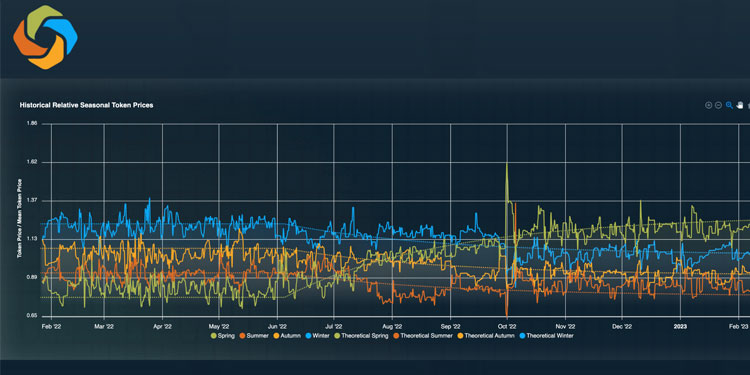Seasonal Tokens, a crypto ecosystem that contains four tokens (Spring, Summer, Autumn and Winter), is set to change its season for the second time since the tokens’ launch. The changing of the season offers investors a predictable way to build wealth.
Perhaps the most challenging thing about building wealth through investing is predicting which assets will increase in price and when they will do so. This issue has been particularly problematic for cryptocurrency investors due to the extreme volatility of the market.
However, Seasonal Tokens offer a way for crypto investors to increase their holdings steadily and reliably by always trading a smaller number of one token for a larger number of another. One way to understand how the Seasonal Tokens ecosystem works is by looking at the way seasonal investing works in trading commodity futures.
Seasonal investing with commodities
Despite being cryptocurrencies, Seasonal Tokens are commodities, so it makes sense to start with an explanation that investors in other assets can understand. Many commodities like heating oil and orange juice are more expensive during the winter months.
Of course, supply and demand are critical ends of the price spectrum. Heating oil is in greater demand, while orange juice is out of season, reducing the available supply. Both scenarios increase the prices of these commodities over the winter, but trading commodities can be a challenge for many investors.
While the commodities themselves can’t be traded electronically, investors typically turn to commodity futures to tap into the seasonal component of investing in them. With commodity futures, the seasonality is already factored in based on the delivery dates.
Most investors who trade futures don’t take delivery of the underlying commodities due to the logistics of having to store them. However, investors who want to fully profit from seasonal changes in the commodity prices must actually take delivery of them in the summer and then store them until the winter.
But what if it were possible to benefit from seasonality by trading a commodity electronically and not taking delivery? Seasonal Tokens give investors this opportunity.
How Seasonal Tokens work
The Seasonal Tokens ecosystem consists of four tokens: Spring, Summer, Autumn and Winter. They’ve been designed so that their prices slowly cycle around each other over the course of years.
The rate of production of one of the tokens is slashed in half once every nine months. In other words, when the season changes every nine months, the token that was being produced at the fastest rate becomes the slowest-produced token because its production dramatically slows.
Over the following months, the price of that token steadily increases as the market adjusts to the reduced supply. As a result, that token goes from being the cheapest of the four tokens to being the most expensive.
At the time of the first halving on June 5, 2022, the Spring token’s rate of production was slashed in half — halting the era of cheap, abundant Spring tokens until the next time they come up in the rotation.
On March 6, 2023, the Summer halving will take place. The event will gradually but steadily turn Summer from the cheapest to the most expensive token as the market adjusts to the dramatically reduced supply because Summer’s rate of production was cut in half. As a result, Summer is expected to be the most expensive token for most of 2023.
Meanwhile, Autumn will become the cheapest token over the same timeframe as it will be produced at the fastest rate of the four. Nine months after the Summer halving, the Autumn halving will occur, eventually bringing Autumn tokens from the cheapest to the most expensive token of the four, and the cycle continues.
How Seasonal Tokens can help investors build wealth
The predictable changes of season are designed to allow investors to steadily increase their holdings in Seasonal Tokens over time. By always trading the most expensive tokens for the cheapest ones, investors can guarantee that the total number of Seasonal Tokens they hold will increase with every trade.
Seasonal Tokens grant investors the experience of buying commodities during their cheapest season and holding them until their most expensive season — without having to deal with the logistics of actually storing commodities for months at a time.
